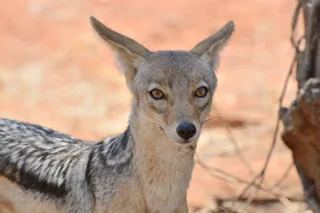

Exploring Ruaha National Park: Tanzania's Hidden Gem
Overview of Ruaha National Park
Ruaha National Park, located in the heart of Tanzania, derives its name from the Hehe word for 'river.' True to its name, the Great Ruaha River flows through the park, serving as a vital lifeline for its diverse wildlife. Despite being one of Tanzania's largest national parks and teeming with wildlife, Ruaha remains relatively undiscovered, offering visitors a sense of remoteness and exclusivity unparalleled in other safari destinations.
Wildlife and Landscape
The Beauty of Seasons
In the dry season, visitors to Ruaha are treated to breathtaking vistas of golden savannah adorned with iconic baobab trees, set against misty hills on the horizon. However, with the onset of the annual rains, the landscape undergoes a remarkable transformation, as the grasslands burst into vibrant greenery, and the baobabs come alive with blossoms. This dynamic ecosystem supports a rich array of wildlife, drawing species like waterbuck, impala, and gazelle to the riverbanks, with predators such as lions, leopards, cheetahs, hyenas, and jackals never too far away.
Wildlife Diversity
Ruaha National Park boasts an exceptional diversity of wildlife, making it a paradise for safari enthusiasts. The park is home to significant populations of iconic African species, including elephants, buffaloes, zebras, giraffes, and various antelope species such as kudu, hartebeest, and impala. Notably, Ruaha hosts approximately 10% of the world's lion population and serves as a crucial conservation area for these majestic predators. Additionally, leopards, cheetahs, and wild dogs can be spotted amidst the park's varied landscapes, providing visitors with unparalleled wildlife encounters.
Avian Paradise
With over 570 species of birds recorded within its boundaries, Ruaha National Park offers a haven for birdwatchers. Migratory birds flock to the park during the rainy season, adding to its already impressive avian diversity. Notable bird species include the Ruaha red-billed hornbill, along with migrants from Europe, Asia, Australia, and Madagascar, creating a symphony of colors and calls amidst the lush vegetation.
Best Times to Visit
February to April: Birding Season
For avid birdwatchers, the period between February and April, coinciding with the long rains, presents an ideal opportunity to witness the arrival of migratory birds. The park's landscape is adorned with wildflowers, providing a picturesque backdrop for both bird photography and landscape enthusiasts.
June to October: Dry Season
The dry season, extending from June to October, offers excellent wildlife-viewing opportunities, as animals congregate around water sources, including the Great Ruaha River. With reduced vegetation, sightings of large mammals such as elephants and lions become more frequent, ensuring an unforgettable safari experience.
November to January: Short Rains
While the short rains from November to January may result in sporadic showers, they also contribute to the park's rejuvenation, ushering in a period of renewal and lush vegetation. Although wildlife sightings may be less predictable during this time, the park's verdant landscapes and vibrant atmosphere offer a unique perspective for visitors.
Q&A
Q1: What sets Ruaha National Park apart from other safari destinations in Tanzania?
A1: Ruaha National Park stands out for its remote and exclusive safari experience, characterized by vast landscapes, diverse wildlife, and minimal tourist crowds. Its expansive wilderness and rich biodiversity make it a hidden gem awaiting discovery.
Q2: What activities can visitors enjoy in Ruaha besides traditional game drives?
A2: In addition to game drives, visitors to Ruaha National Park can engage in guided walking safaris, birdwatching excursions, and cultural interactions with local communities. These immersive experiences offer a deeper understanding of the park's ecosystem and cultural heritage.
Q3: How does Savannah Wanderlust Expeditions contribute to conservation efforts in Ruaha National Park?
A3: Savannah Wanderlust Expeditions, the leading safari operator in the region, actively supports conservation initiatives in Ruaha National Park through community engagement, habitat preservation, and sustainable tourism practices. By partnering with local communities and conservation organizations, Savannah Wanderlust Expeditions strives to protect and safeguard the park's natural heritage for future generations.





